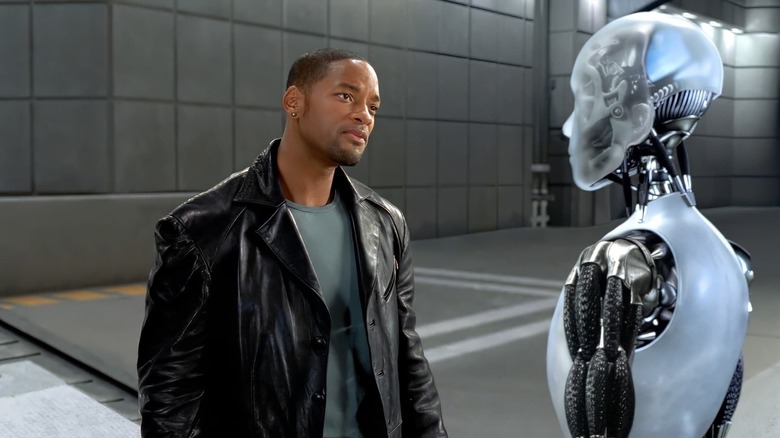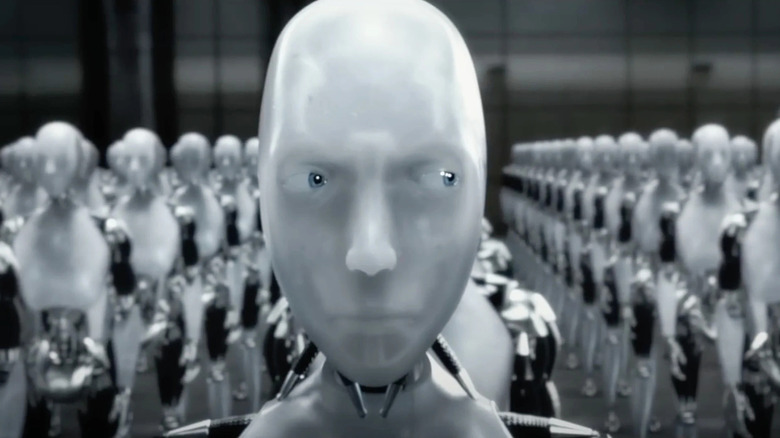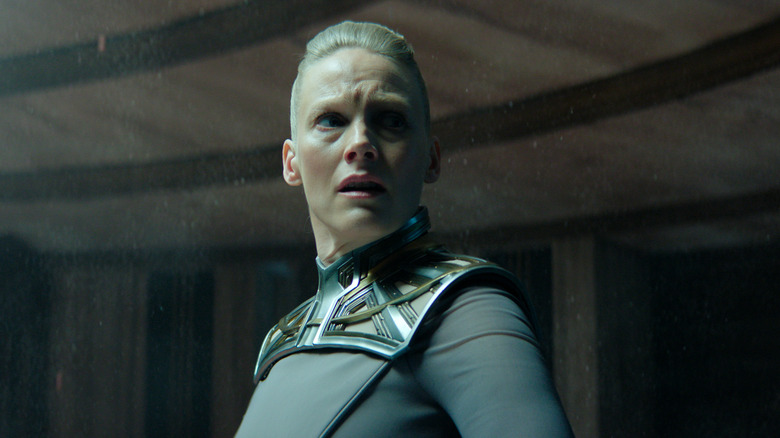Proposed I, Robot TV Series Sequel Would Have Adapted Other Asimov Stories
The Will Smith-starring "I, Robot" was released in 2004. For the time, it was a box office success, bringing in over $350 million worldwide. While that would've been enough for an assumed sequel nowadays, back then, nothing was certain. Screenwriter Akiva Goldsman said as much in a 2024 interview with SYFY WIRE, explaining:
"It's one of those things where everybody talked about it some, but it was not [a sure thing] in those days the way it is now. Now, if a movie kind of works, you're like, 'Well let's make another one!'"
He went on to point out that while there were attempts to make a sequel featuring Sonny (the autonomous robot played by Alan Tudyk), Smith, and company, the project never ventured beyond the conceptual phase. Within that effort, though, multiple additional Asimov stories were considered. Goldman himself mentioned two:
You could see it moving on, you could have rolled it into a version of 'Caves of Steel,' or [had] Spooner and Sonny [teaming up]. You can sort of see how all these things could have been, but they weren't — and that's okay, too.
He added that there were "several further attempts by myself and [producer] John Davis to turn 'I, Robot' into a TV series that would continue Sonny's story, while also adapting more of Asimov's robot shorts." To appreciate the potential of those adaptations, however, you have to start by understanding the kind of adaptation "I, Robot" was in the first place.
What Asimov story is I, Robot adapted from?
One important thing to understand about "I, Robot" is that it's by no means a straight adaptation of Asimov's source material. On the contrary, the iconic sci-fi author was famous for his short stories. Even his epic "Foundation" novels (which have since been adapted into Apple TV's impressive and ongoing streaming series, itself set in the same universe as Asimov's "Robot" tales) started as a series of short stories as a serial in a magazine. Indeed, "I, Robot" is a mash-up of several of those stories, tying into some of his short stories focusing on wayward robots or the computing complexities of the supercomputer Multivac. It also pulls from classic recurring themes around Asimovian sci-fi, like the simple in theory, yet deeply convoluted in application, Laws of Robotics and the idea of Robot awareness, independence, and even consciousness.
Here's the thing with the movie adaptation, though. Asimov's Robot-focused short stories span several books. Yes, one compilation is titled "I, Robot," but it has no central character other than a handful of scientists (or, more accurately, "robopsychologists" like Dr. Susan Calvin) who pop up repeatedly, but without a specific arc. Each story stands alone, and they don't flow into a cohesive narrative, as with the movie. The only exception is the Robot novels — a specific set of narrative-driven stories within Asimov's larger robot universe. Those are important, but we'll talk about them in a minute. For the most part, the film "I, Robot" is the result of its writers cherry-picking ideas and nuggets from Asimov's work and then weaving them together into the new, Smith-led narrative that hit theaters in 2004.
What other Asimovian stories could we have seen?
Due to the patchwork nature of the original "I, Robot" movie adaptation, there are numerous ways a sequel could have been assembled. The idea of creating, in Goldsman's words, "a TV series that would continue Sonny's story, while also adapting more of Asimov's robot shorts" is one obvious option. To be sure, the film's writers could have continued to dive deeper into the well of Asimov's writings to adapt some of the more splashy positronic narratives in episodic format.
The other option was tying the exploits of Smith's detective Del Spooner (who is not Asimov canon) to the real major detective in Asimov's writings: Elijah Baley. In the first book in the novel series, the New York City detective teams up with a robot named R. Daneel Olivaw. Over the next few books, the pair solves multiple interplanetary mysteries together.
Eventually, Baley dies, but Daneel? The robot continues to exist, shepherding humanity as it spreads across the galaxy. In fact, Daneel eventually goes by another name: Demerzel. Sound familiar? That's the name of Laura Birn's character in Apple TV's "Foundation" series. That's right. Daneel/Demerzel is one of the key connection points between Asimov's Robot and Foundation works. So, yeah, in theory, sequels to "I, Robot" could have been as simple as a serialized short story compilation. But they could also have been as complex as a sprawling, interplanetary, and then galactic, story that starts in the relatively near future with "I, Robot" and ends with Demerzel helping humanity survive the fall of the Galactic Empire tens of thousands of years from now. Ah, what could have been.


